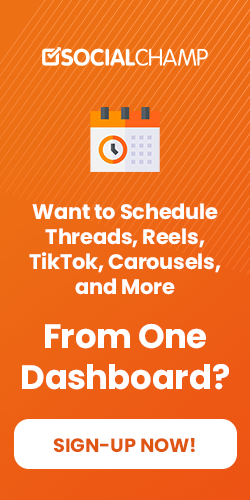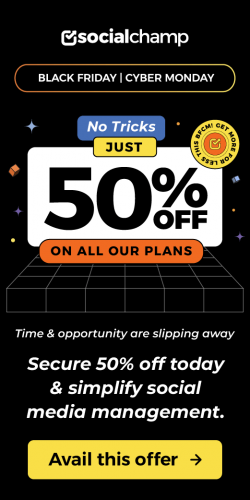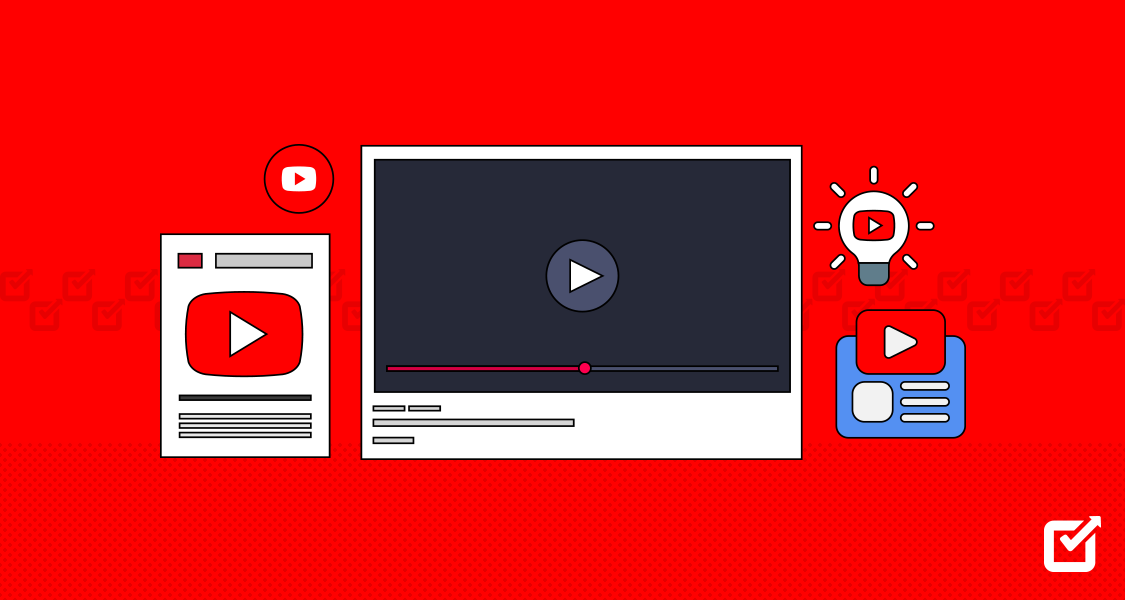If you manage social media for a brand, you’ve likely wondered, “Why isn’t my post performing?“
You followed all the rules—kept it short, added emojis, dropped a catchy CTA—but still, zero engagement.
The problem isn’t what you’re posting—it’s how you’re saying it.
Social media copywriting in 2025 demands more than surface-level polish.
You need clarity, timing, and intent behind every line.
Because today, the difference between getting scrolled past and getting noticed is one sentence.
After analyzing top-performing brands, I’ve discovered the key techniques that drive engagement for their social media content, and I’m going to discuss them here.
By the end of this blog, you’ll be a pro at social copywriting.
And if you need a hand in effectively managing social media, Social Champ has always got your back!
Now, let’s get started!
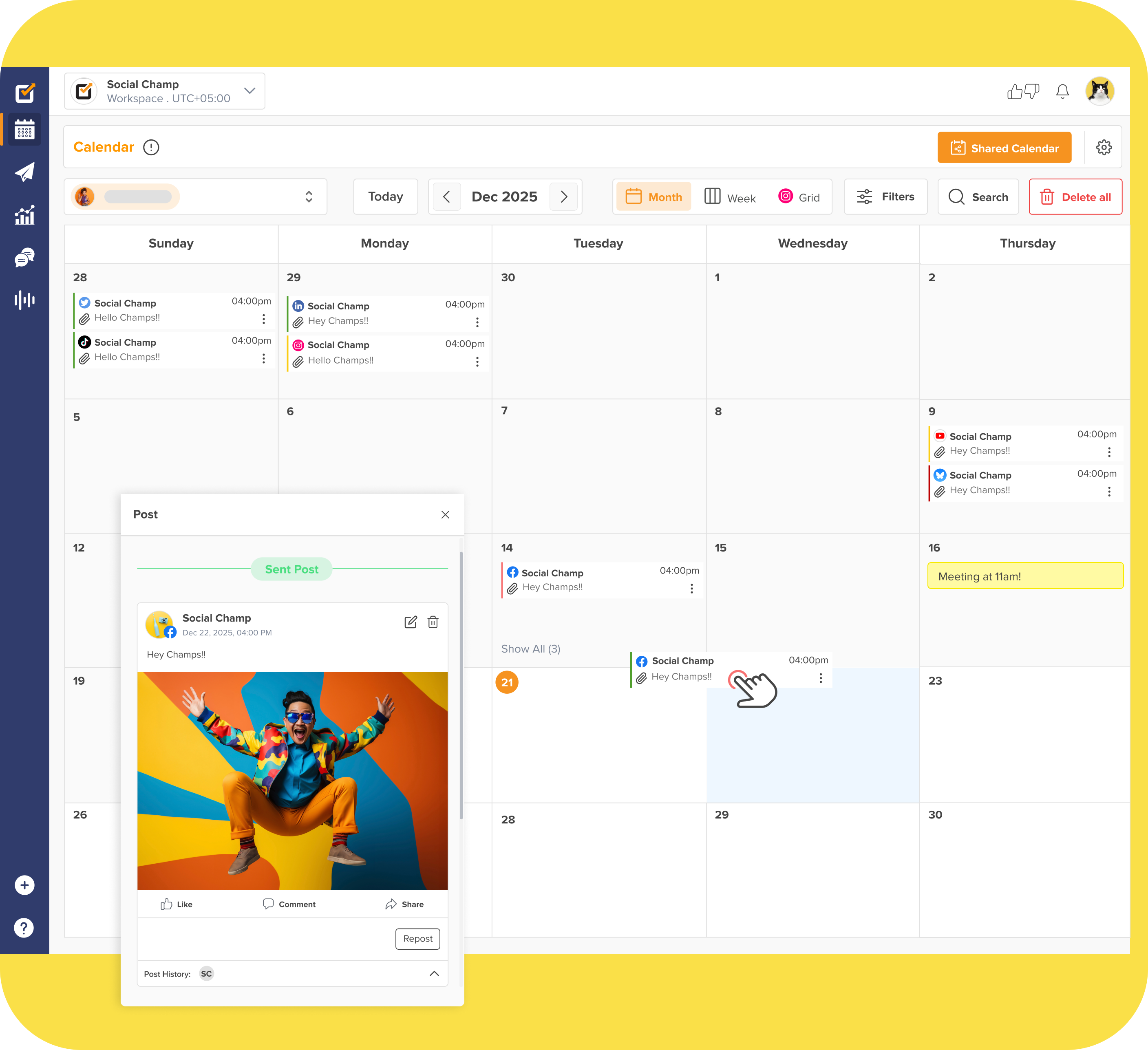
Wrote a Scroll-Stopper That Deserves the Spotlight?
Let Social Champ schedule it at peak times across all platforms without lifting a finger. Sign Up Now!
Short Summary
- Social media copywriting means writing clear, compelling, and strategic content that grabs attention, builds connections, and drives action across platforms.
- The copywriting process follows the AIDA model: Attention, Interest, Desire, and Action.
- Techniques like platform-native content, scroll-stopping questions, shocking stats, open loops, and cliffhangers are designed to interrupt the scroll and spark curiosity.
- Using FOMO, exclusivity, contrast, and micro-stories helps make your message more persuasive and emotionally resonant.
- Copy written in second-person voice, with short, punchy sentences enhanced by eye-catching visuals, performs better across platforms.
- You can extend the life of your content by repurposing comments, memes, and top-performing posts into new formats that continue to drive engagement.
- Tools like Social Champ streamline the process with AI-powered suggestions, scheduling, analytics, and repurposing, making great copy easier to create, post, and optimize.
What Is Social Media Copywriting? (And Why It Matters in 2025)
Social media copywriting refers to crafting concise, engaging, and persuasive content tailored for social media platforms.
It involves writing messages, posts, ads, and captions that not only grab the audience’s attention but also align with the platform’s style and purpose.
The goal is to drive engagement, build brand awareness, and encourage action—whether that’s likes, shares, comments, or click-throughs.
Featured Article: Social Media Posting Schedule: Your One-Stop Guide To Consistency
Why Social Media Copywriting Is Important?
By now, I’m sure every brand or business out there has realized the importance of social media in their marketing strategy.
It builds awareness, ensures consistent presence, and provides a way to engage with their customers.
Social media copywriting takes it a step further by adding more strategy to it.
Here’s why copywriting for social media is better than just posting randomly and aimlessly jumping on trends now and then.
-
Engagement and Audience Connection
People spend a lot of time on social media, and for a brand to stand out, its messages need to resonate.
Good copywriting helps a brand talk directly to its audience in a way that grabs attention and encourages people to interact—whether it’s a like, comment, or share.
The more people engage, the more likely they are to remember the brand and feel connected to it.
-
Brand Voice and Personality
Every brand has a personality.
Some might be playful and fun, others more professional or serious.
Copywriting for social media allows a brand to express this personality consistently.
When done well, it builds a stronger identity, making the brand more relatable and memorable.
It helps the audience know who the brand is, what it stands for, and why they should care.
-
Driving Action and Conversions
Social media copy is often used to drive action, like visiting a website, signing up for a newsletter, or buying a product.
Good copywriting will include persuasive calls-to-action (CTAs) like “Shop Now” or “Learn More” so users know what to do next.
Without this, you risk your audience getting lost or disengaged and your brand missing out on opportunities.
-
Optimizing for Each Platform
Different social media platforms require different approaches.
What works on Instagram won’t work on Twitter or LinkedIn.
Social media copywriting is about crafting platform-specific messages that take into account each platform’s unique features—word count limits, tone, and visual elements.
A customized message will perform better than a generic one.
20 Social Media Copywriting Techniques to Maximize Engagement
Simply put, the core idea of social media copywriting works on the AIDA model: you grab attention, spark interest, initiate desire, and drive action.
But it is easier said than done.
Most of the time, the social media copy you write, thinking it’ll blow up, it’s usually the one with the least engagement.
This happens because crafting effective social media copy requires more than just a catchy phrase or an eye-catching image.
It involves understanding your audience’s needs, emotions, and behaviors, then tailoring your message to resonate with them.
Let’s explore 20 effective social media copywriting techniques to maximize your engagement like never before.
-
Write Platform-Native Content
When I say platform-native content, I mean three things to be mindful of:
- The User Demographic
- A Suitable Tone
- The Algorithm-Favored Content Style/Format
All three aspects are interconnected, and getting them right serves as the perfect foundation for a successful social media copywriting formula.
Let me explain.
Every social media platform has a distinct user demographic and target market.
Only by using the content tone and the style the target users prefer can you grab their attention.
In other words, you need to speak their language.
For example, using Gen-Z lingo on LinkedIn would fail, but might attract a person or two on TikTok.
Similarly, LinkedIn’s algorithm favors long-form content, while short videos perform better on platforms like Instagram and TikTok.
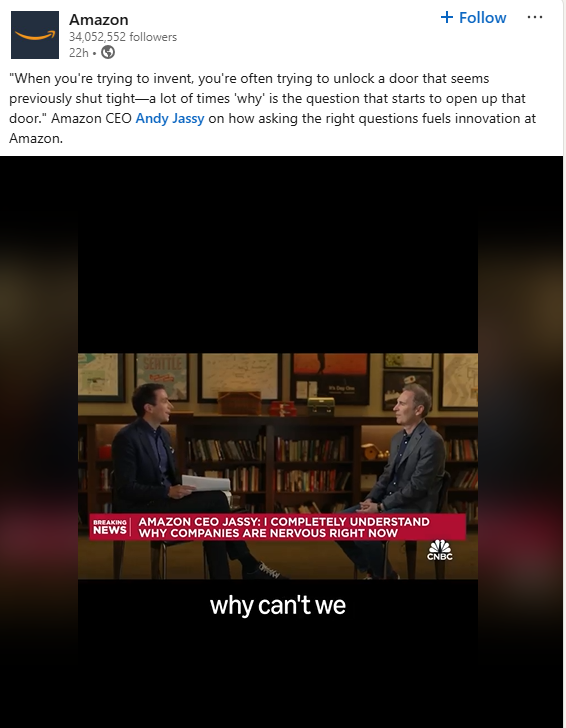
Difference Between Amazon’s Posts on LinkedIn and TikTok 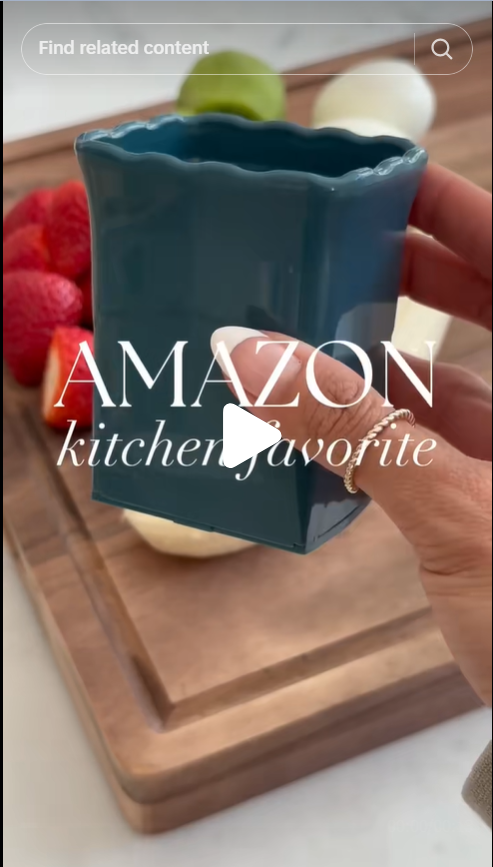
Difference Between Amazon’s Posts on LinkedIn and TikTok -
Ask Scroll-Stopping Questions
Questions are one of the best hooks you can use to grab your audience’s attention.
Asking thought-provoking questions in your social media posts is a great way to spark engagement and encourage people to stop scrolling.
When you ask questions, it invites the audience to think about their own experiences or opinions, creating a mental connection.
For example, instead of simply stating a fact, pose a question like, “Have you ever struggled with this issue?” or “What would you do if you faced this situation?”
These types of questions encourage users to engage with your post and breed interaction.
As for platforms, question hooks work best on most of them, whether LinkedIn, Instagram Reels, Twitter, or Facebook.
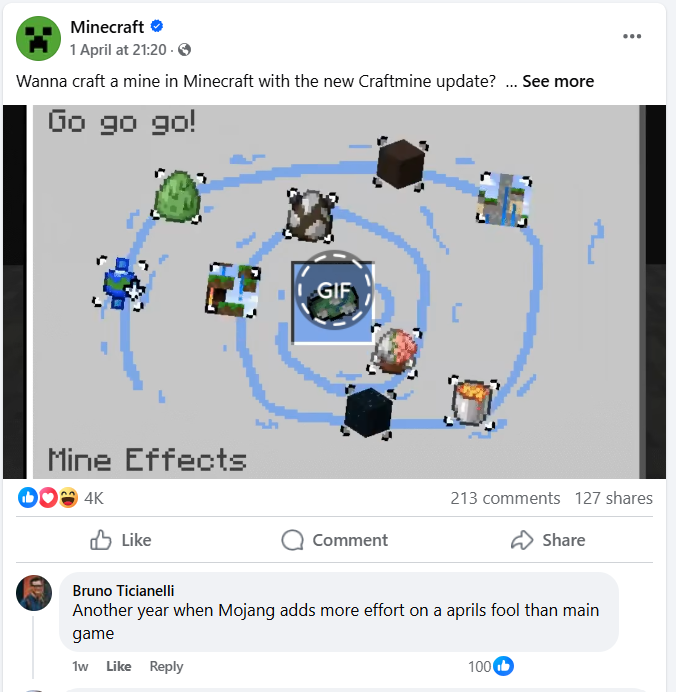
Example of Question Hooks on Facebook -
Lead With a Shocking Stat
Numbers, especially surprising or alarming ones, capture attention fast.
If your audience sees a statistic that challenges what they believe or reveals an unexpected truth, they’ll likely stop to read more.
For example, “80% of businesses fail within the first two years” is more compelling than “Many businesses fail early on.”
The specificity builds credibility while stirring curiosity.
Use industry-relevant, data-backed stats that make your audience say, “Wait, what?”.
Pair the stat with a follow-up insight or takeaway that ties it back to your offer or content goal.
Just make sure the source is credible—no one likes inflated or misleading figures or, worst of all, clickbait.

Statistics Hook in a LinkedIn Post -
Tease With an Open Loop
An open loop is a storytelling technique that introduces a question or mystery but doesn’t resolve it immediately.
It plays on the human brain’s need for closure.
In social media copy, this might look like: “I made a huge mistake that almost cost me my business, here’s what happened…” or “You’re probably making this one small error that’s killing your engagement.”
You’ve set up a tension the reader needs resolved—so they click, read, or scroll through to the end.
Use open loops in captions, stories, or the first slides of a carousel to build curiosity and keep users glued to your content.
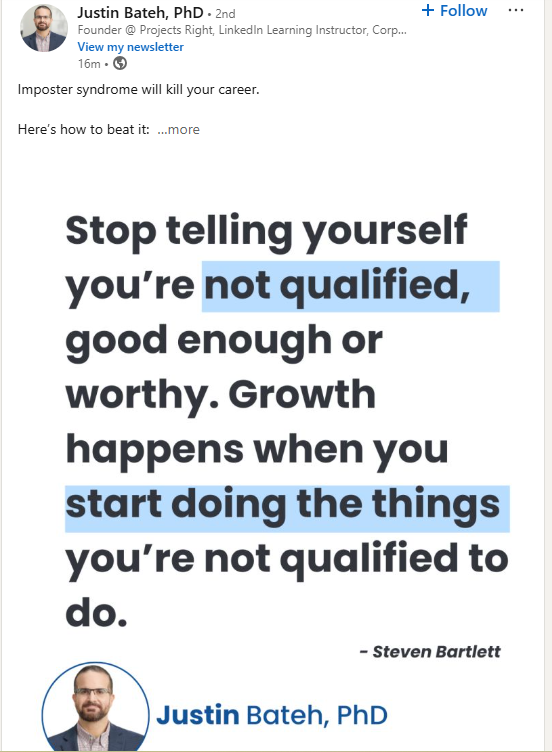
Example of an Open Loop LinkedIn Post -
Capitalize on Fear of Missing Out (FOMO)
FOMO is a powerful emotion that drives action, particularly on social media.
When people feel like they might miss out on something exclusive, limited-time, or trending, they’re more likely to engage or take action quickly.
Use this by emphasizing urgency or scarcity in your content.
For example, promoting a limited-time offer, an exclusive event, or a product with low stock can create a sense of urgency.
Phrases like “Hurry, only a few spots left!” or “Last chance to get 50% off!” tap into this fear and encourage people to act fast, boosting engagement and conversions.
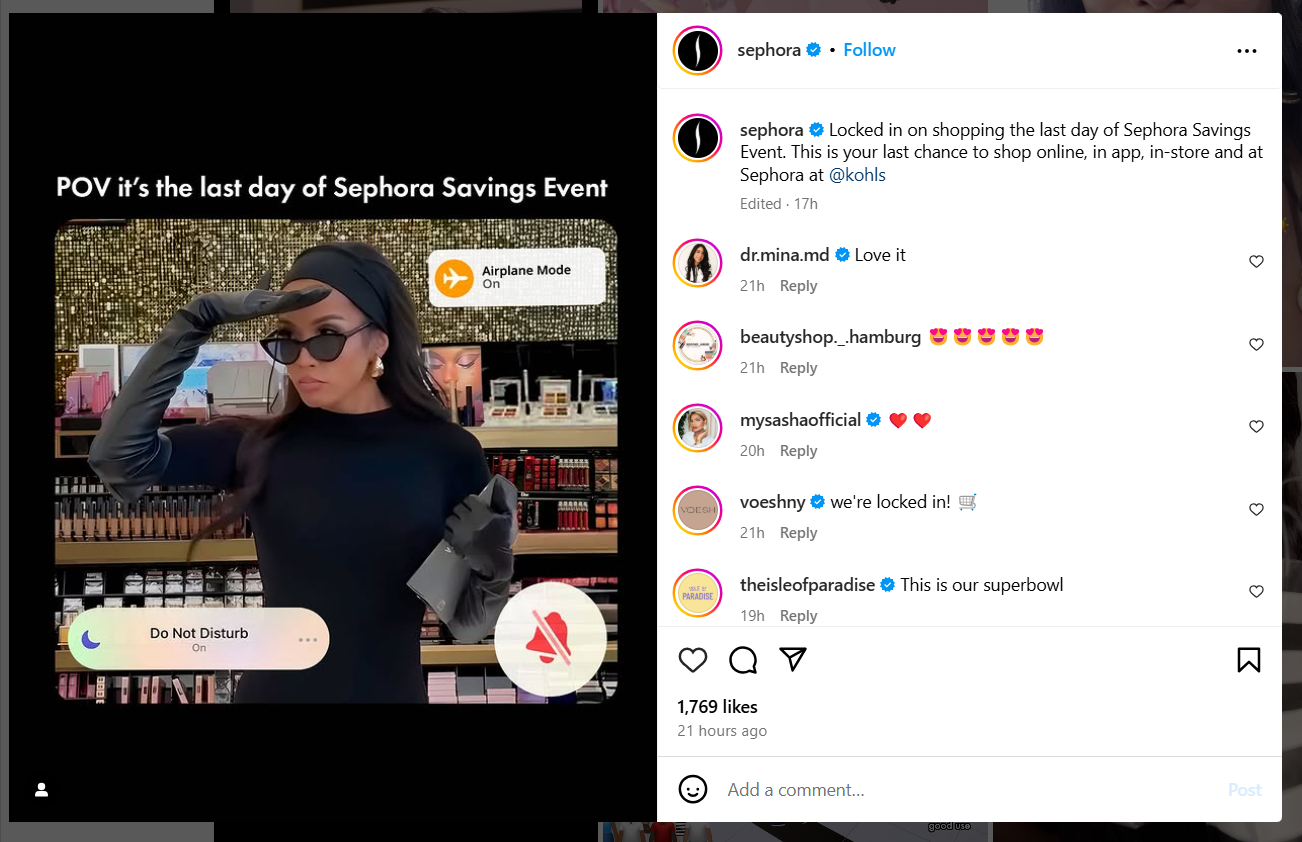
Sephora’s Savings Event Post on Instagram -
Challenge the Audience
When you challenge your audience, you trigger curiosity and ego in the best way.
A bold line like “Think your workflow is efficient? Think again.” acts like a dare—they’ll want to read on just to prove you wrong or see what they’re missing.
This technique taps into competitiveness and a desire for self-improvement.
It’s especially powerful in professional niches like productivity, marketing, or entrepreneurship.
Just make sure your challenge is constructive, not condescending.
Present the problem, then lead them toward your unique solution.
This copywriting style invites discussion, shares insights, and most importantly, gets people thinking, clicking, commenting, and even resharing to make their point.
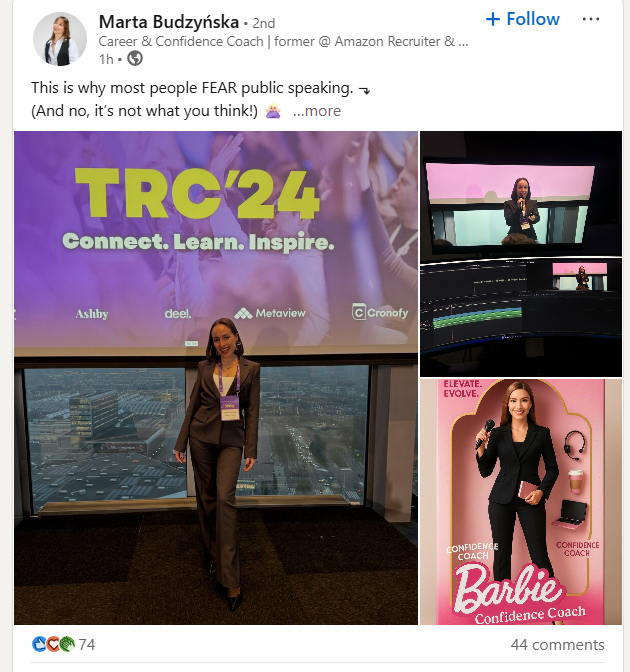
Example of a LinkedIn Post With Copywriting Technique -
Use Second-Person Voice (“You”)
Using “you” in your copy makes your content instantly more personal and conversational.
It’s the difference between saying, “Marketers often struggle with engagement” versus “You’re probably struggling to get more eyes on your content.”
The second-person voice brings the reader into the message.
Especially on social media, where connection is currency, “you–focused” copy breaks the wall between brand and audience, making your message feel like a one-on-one conversation.
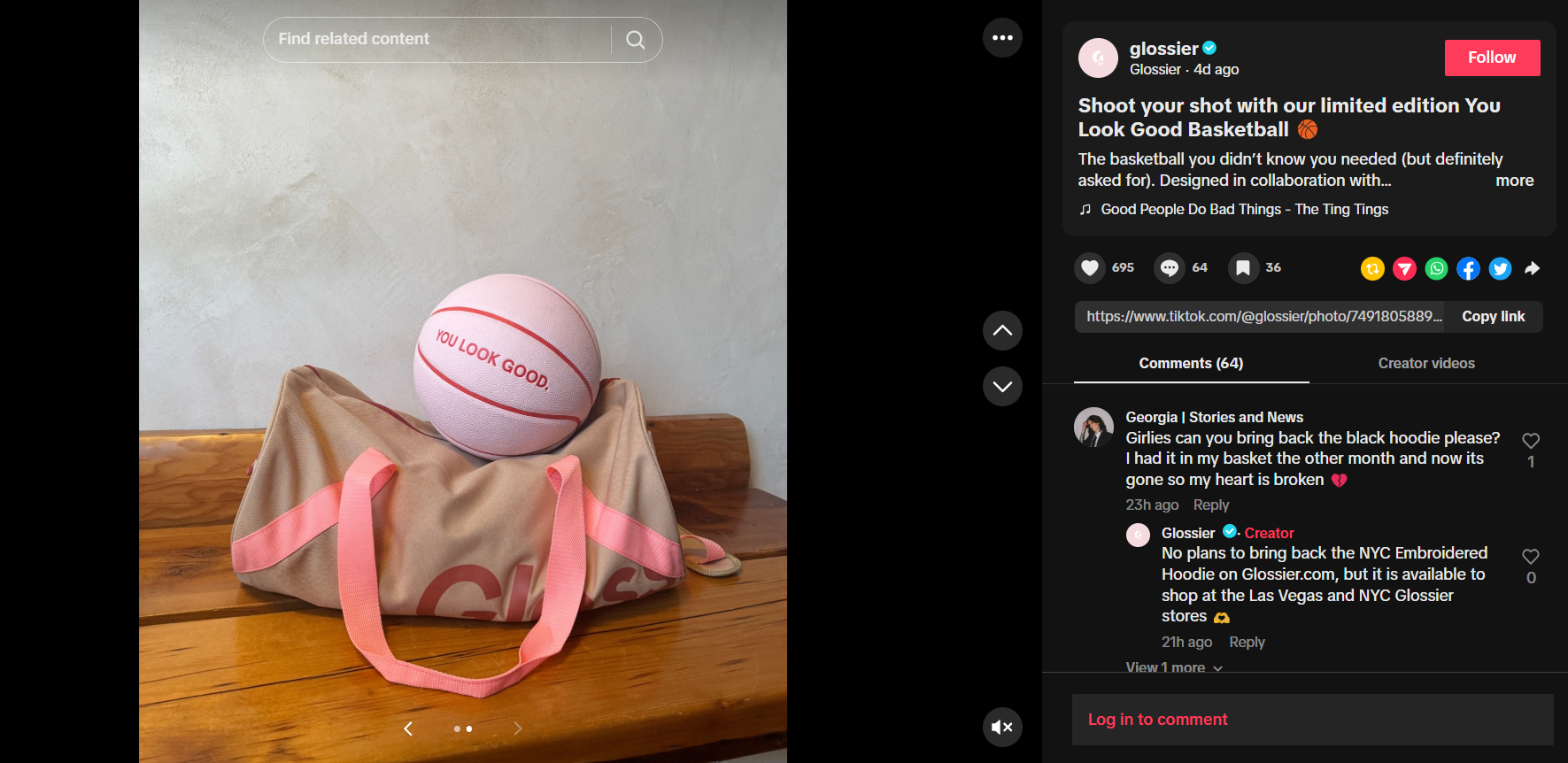
Glossier’s TikTok Post Example “Shoot Your Shot” -
Keep Sentences Short and Punchy
Social media users scroll fast.
Long, winding sentences get skipped.
Short, punchy copy grabs attention and makes content easy to skim.
Think of it as writing headlines for every sentence.
Each line should pack a punch or move the message forward.
Break long thoughts into multiple lines or separate slides (in carousels or threads).
Use simple words, strong verbs, and cut the fluff.
Your copy should feel like a conversation, not a lecture.
The easier it is to read, the more likely it is to be read.
This technique boosts engagement because people don’t need to work hard to get your message.
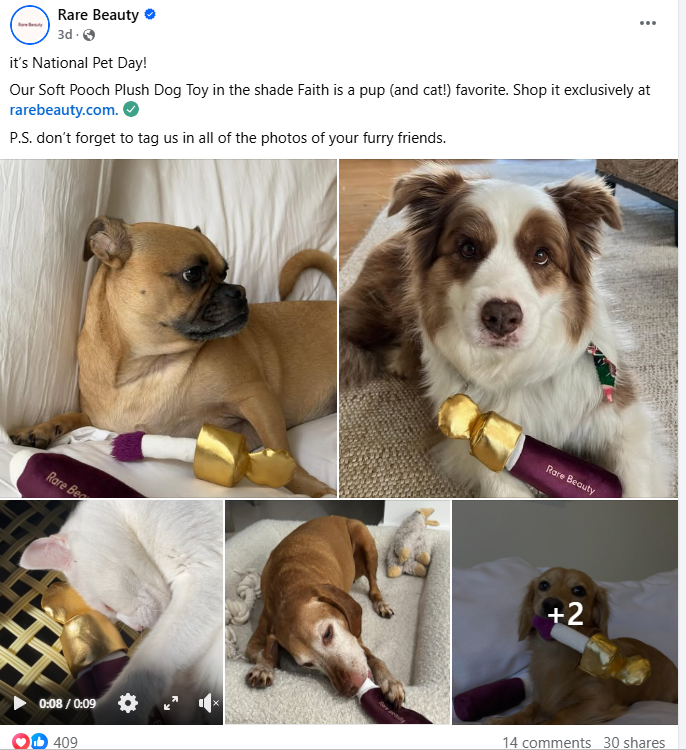
Example of Rare Beauty’s Facebook Post with Short and Punchy Lines. -
Use Cliffhangers in the Carousel
Want people to keep swiping your carousel or reading your thread?
Start with a cliffhanger.
Tease just enough to spark curiosity, but hold back the “aha” moment.
Say something like, “Most creators make this mistake on Slide 2” or “Wait until you see what happened in Slide 4.”
This tactic triggers an irresistible urge to know more, thanks to our brain’s natural need for closure.
Cliffhangers turn passive scrollers into active readers who stay engaged till the last word or visual, which boosts algorithm signals and content reach.
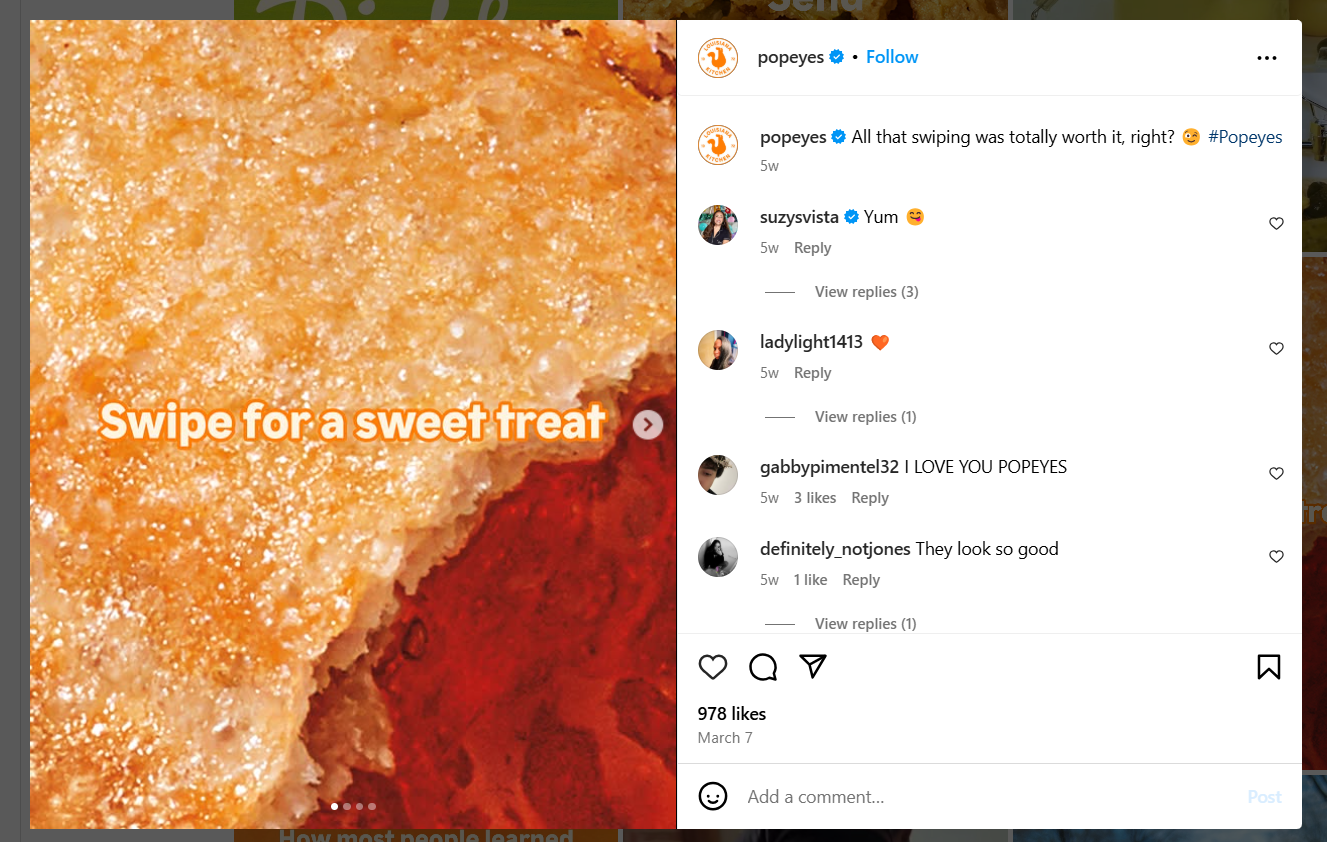
Example of Popeyes’ Instagram Post -
Use Numbers or Lists.
Numbers are scannable.
Lists are digestible.
That’s why content like “5 ways to boost your Instagram reach” or “3 things every marketer should stop doing” performs so well.
It sets clear expectations and gives the brain a sense of structure and satisfaction.
Readers know they’re about to get specific, manageable insights—not a vague wall of text.
You can use numbered lists in captions, carousels, or Twitter threads to guide the audience through your points step by step.
Always start with the most surprising point to hook them early.
-
Invite Opinion
Inviting your audience to share their opinions encourages engagement and fosters a sense of community.
Phrases like “Agree or disagree? Let’s debate” or “What’s your take on this?” make your audience feel heard and valued.
It transforms a passive scroll into an active conversation.
People enjoy voicing their thoughts, especially when the topic is relevant and emotionally charged.
This technique works well on platforms like Instagram, Twitter, and LinkedIn, where comments and interactions are integral to the platform’s performance.
-
Use Eye-Catching Images, Video Thumbnails, and Infographics
Visuals are an essential part of social media content.
A strong image, thumbnail, or infographic can make your post impossible to scroll past.
Studies show that posts with visual content receive more engagement than those without.
The right visuals grab attention, enhance your message, and can even convey complex information at a glance.
- Infographics, in particular, are great for breaking down statistics or explaining processes.
- Thumbnails act as mini-previews that entice people to click on the video.
- An eye-catching image paired with sharp, impactful copy can dramatically increase engagement.
Always make sure your visuals are high quality, relevant, and complement your message to avoid overwhelming the audience.

Eye-Catching Image Post on Instagram by Hungryroot -
Incorporate CTAs
A call to action (CTA) is essential for guiding your audience to the next step.
Whether it’s “Double-tap if you agree” or “Save this for later,” CTAs create a clear path for engagement.
They convert passive viewers into active participants by giving them an easy action to take.
You could also prompt users to share, comment, visit your website, or even sign up for an offer.
Effective CTAs are simple, action-oriented, and tailored to the platform’s strengths.
On Instagram, a CTA might ask people to tag a friend, while on LinkedIn, it could invite a comment or share.
A strong CTA brings direction and purpose to your content.
-
Frame It as a Movement
People love to feel like they’re part of something bigger than themselves.
Framing your content or brand as a movement gives people a sense of belonging and purpose.
Words like “Join the creators who are changing the game” or “Be part of the future of marketing” create a rallying cry that people want to get behind.
This is particularly powerful when you’re aiming to cultivate a loyal community or audience.
It taps into the desire to be part of a collective effort or cause.
When framed as a movement, your brand attracts like-minded individuals who are more likely to engage, share, and advocate for you.
-
Create Contrast
People respond well to comparisons, especially when they highlight the benefits of a product or service.
“Before vs. after using [your product]” is a classic example of using contrast to show tangible results.
It also allows you to demonstrate visually how your solution can transform someone’s situation better than your competitor’s.
Contrast can also be used to emphasize pain points and highlight the benefits of choosing your brand.
-
Tell Micro-Stories or Personal Anecdotes
People connect with stories, especially ones that are personal and brief.
Micro-stories are perfect for social media—they’re short, often a few sentences long, but impactful.
For example, “I was about to quit my business, but then I tried this one thing, and everything changed…”
These stories humanize your brand, making you more relatable.
They offer insight, inspire, or entertain in a way that feels personal.
Micro-stories don’t have to be complex—they just need to spark a feeling.
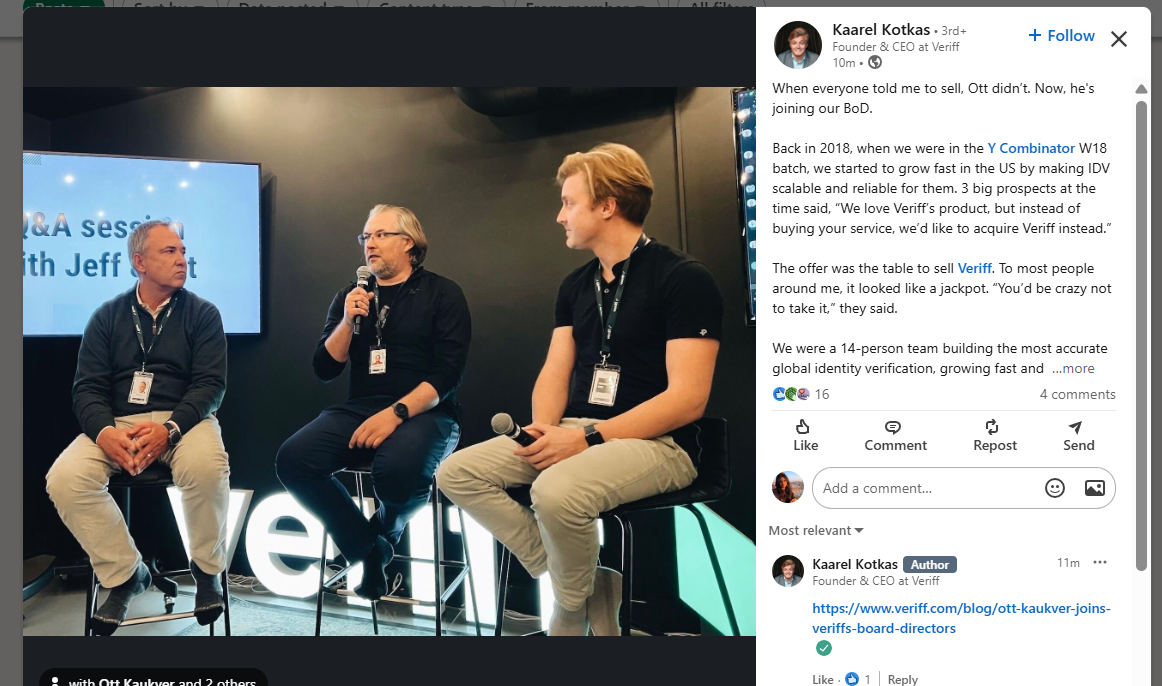
Example of a Personal Story Post on LinkedIn -
Repurpose Comments
Repurposing comments—whether positive feedback, questions, or debates—into new posts or testimonials provides social proof and sparks further engagement.
A comment like, “I’ve tried this, and it worked wonders!” can be turned into a post celebrating customer success.
Likewise, a comment asking a question can inspire a new blog post or video answering that inquiry.
Repurposing comments also shows you value your audience’s input, making them feel heard and appreciated.
-
Use the Meme Culture to Your Advantage
Meme culture and trending topics are some of the fastest ways to gain attention on social media.
They create an instant connection because they often tap into shared cultural references.
Just be sure to keep it aligned with your brand voice and values—too forced or out-of-place memes can backfire.
When done right, memes and trends increase engagement and expand your reach to a broader audience.
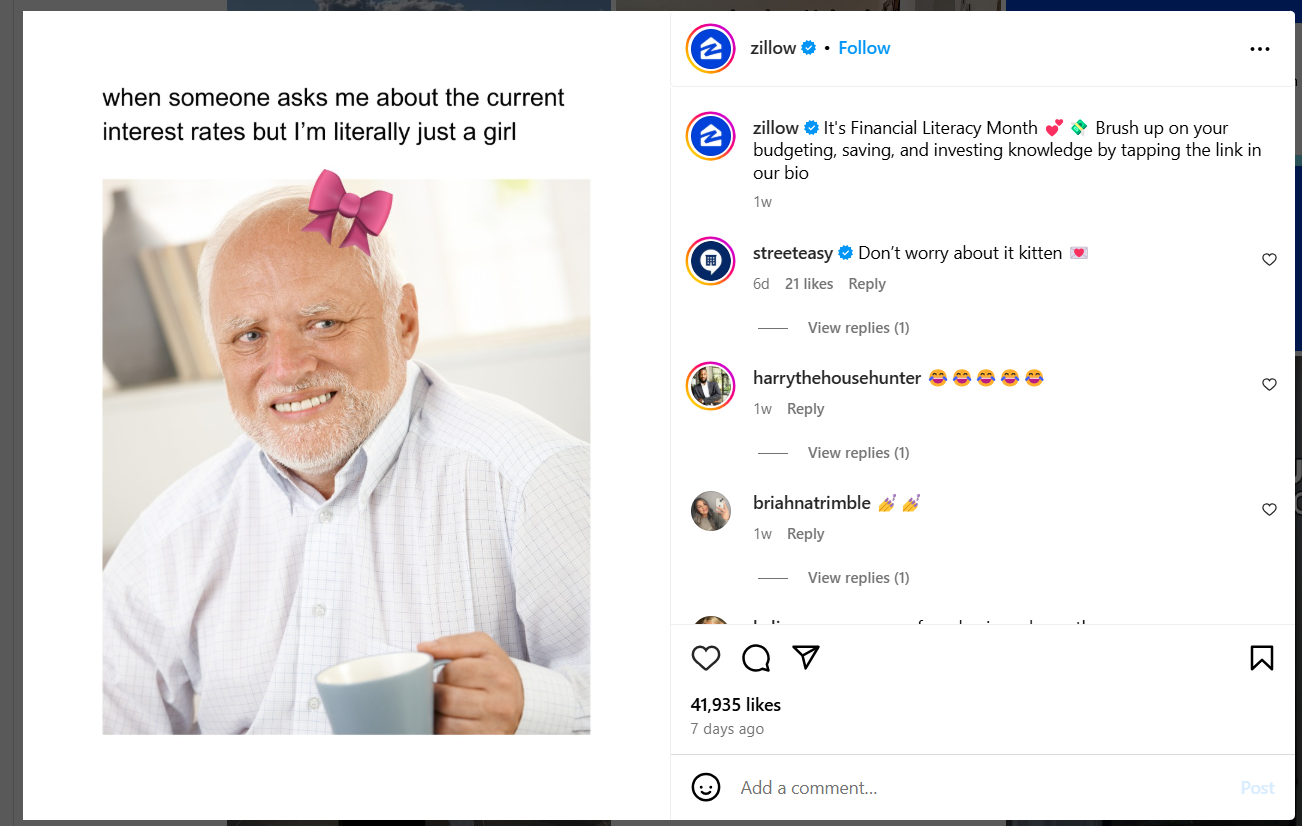
Meme Posted by Zillow on Instagram -
Repurpose Well-Performing Posts
Repurposing successful content is a smart strategy to maximize the value of your posts.
Instead of starting from scratch every time, take your top-performing content and give it a fresh twist.
For example, a well-received blog post can be broken down into a series of social media posts, infographics, or videos.
This not only saves time but also ensures that your best ideas continue to reach new audiences.
Repurposing content also reinforces your message, giving it multiple chances to make an impact.
Keep an eye on what resonates with your followers, then find creative ways to present it again for even greater engagement.
-
Create Humorous and Relatable Content to Build a Genuine Connection With the Audience
Humor is a great way to connect with your audience on social media.
People love funny content, especially when it reflects their own experiences or struggles.
When you share content that’s funny and relatable—like everyday situations at work or in life—it makes people more likely to engage with your posts and share them.
Humor also helps your brand feel more down-to-earth and approachable.
Just make sure the jokes fit your brand’s voice and don’t offend anyone, so everyone feels included and connected.
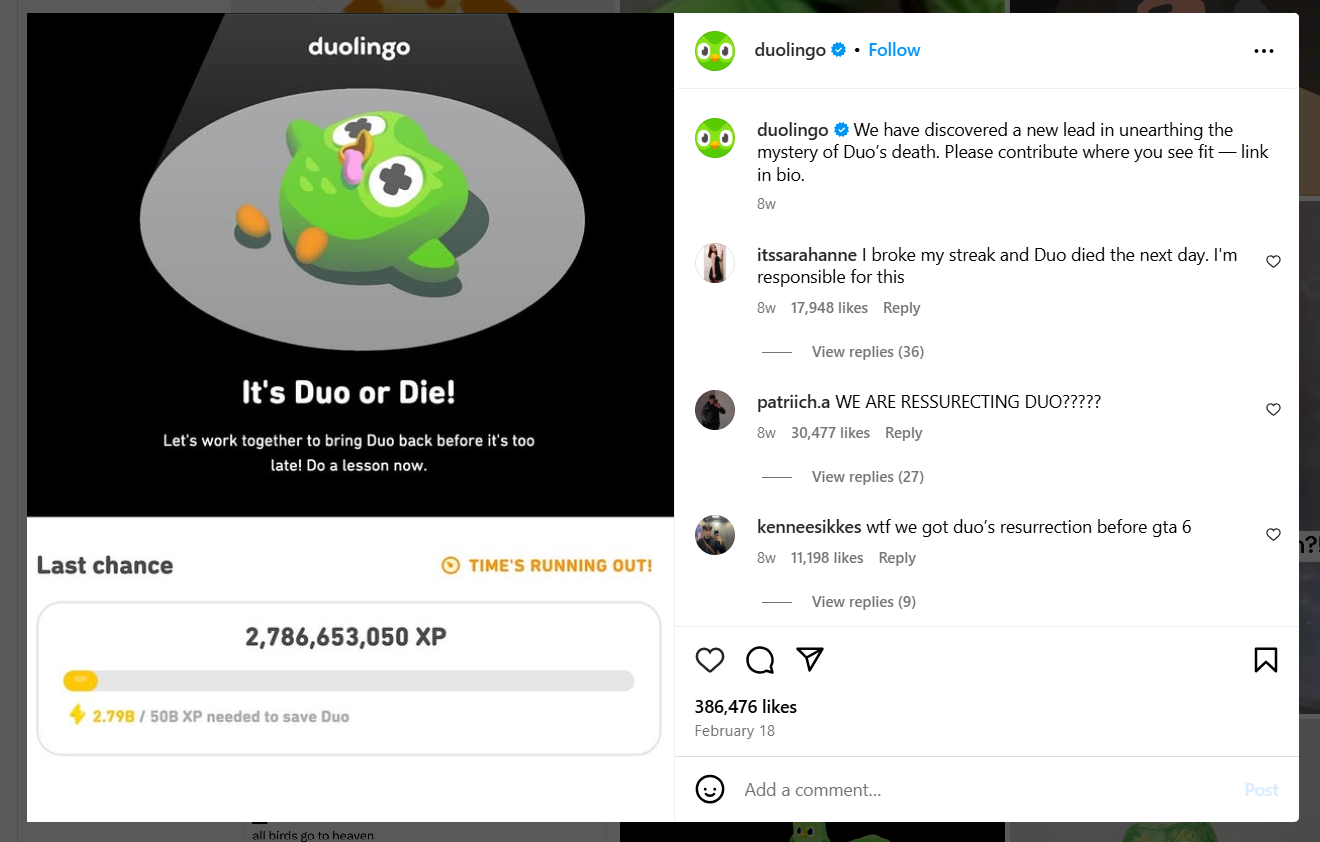
Featured Article: 15 Best Instagram Growth Tools to Boost Your Presence in 2025
How Social Champ Helps You Master Social Media Copywriting
A great copy is only half the job. The rest?
Timing, format, consistency, and knowing what performs.
That’s where Social Champ steps in—not as another tool but as the system behind every smart post.
Start with AI-powered content suggestions.
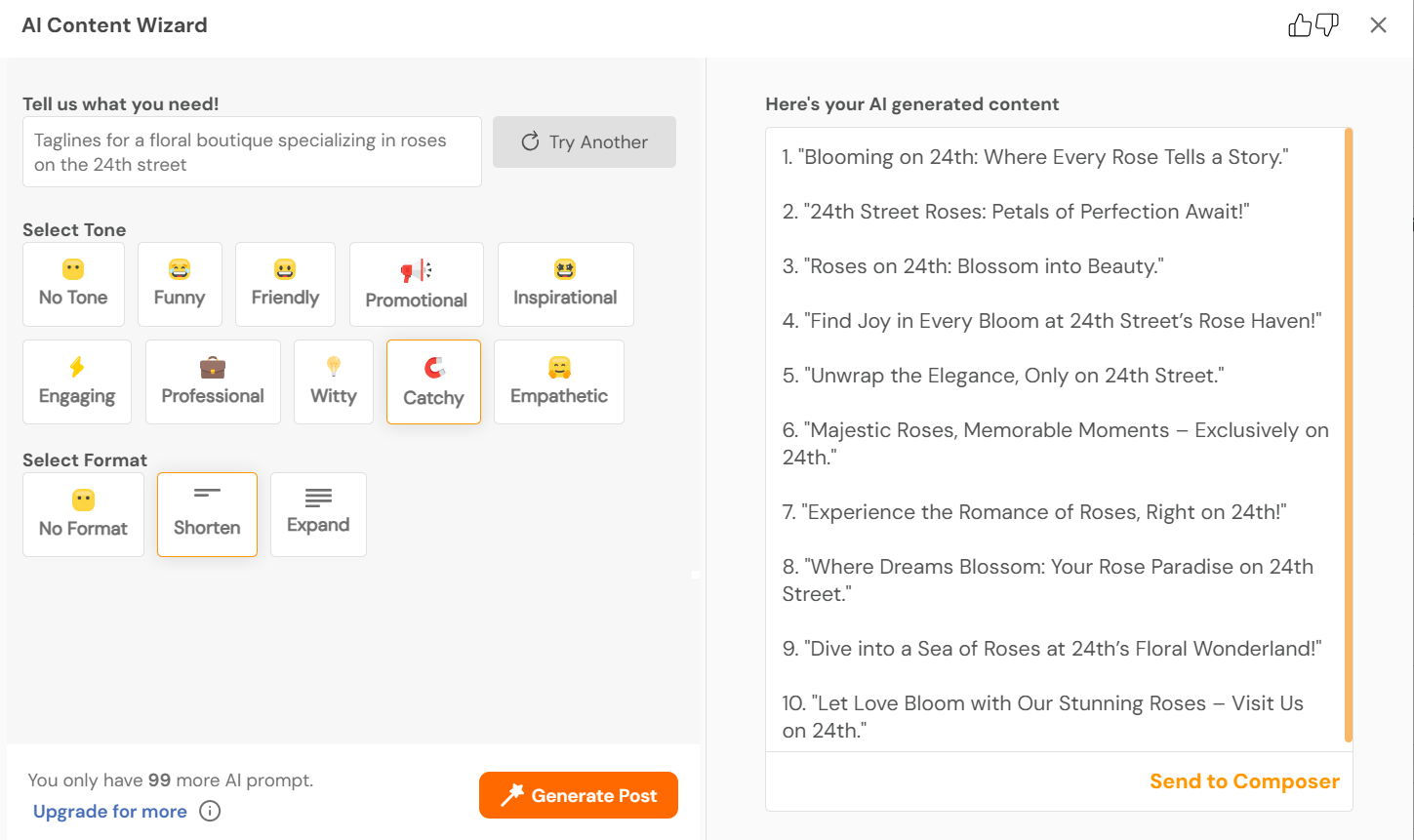
When you’re short on ideas or stuck rephrasing the same line for the fifth time, Social Champ offers real, usable caption drafts—tailored by platform, tone, and content type.
Once your copy’s ready, schedule it.
No juggling tabs or manually posting at 3 PM.
Social Champ’s auto-scheduling handles publishing across all platforms, exactly when your audience is most active.
But writing blindly? That’s not it.
With real-time analytics, you know which posts hit, which formats drive engagement, and how your audience reacts—so you’re not just posting, you’re improving.
There’s also repurposing.
Instead of rewriting from scratch, recycle top-performing content with slight copy tweaks.
One idea, multiple formats, better reach.

Make Every Word Count With Social Champ!
Pair powerful copy with data-backed scheduling and AI-powered content suggestions. Try for free today!
Conclusion
Social media copywriting is about being clear, intentional, and aligned with how people scroll, pause, and engage.
Every tactic you’ve just read, from asking bold questions and teasing open loops to using contrast, cliffhangers, and memes, is built to do one thing: earn attention and keep it.
With AI-driven insights, easy scheduling, and real-time analytics, Social Champ allows you to test, learn, and scale without burnout.
In a space where everyone’s posting, your edge is how you write – and how you use the tools behind it.
This isn’t about writing more. It’s about writing with purpose.
And now you know how!



